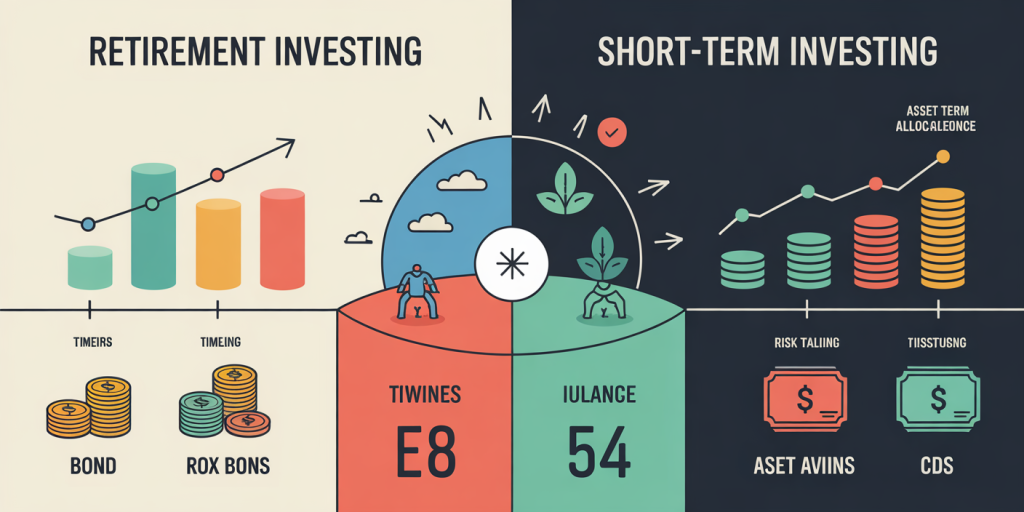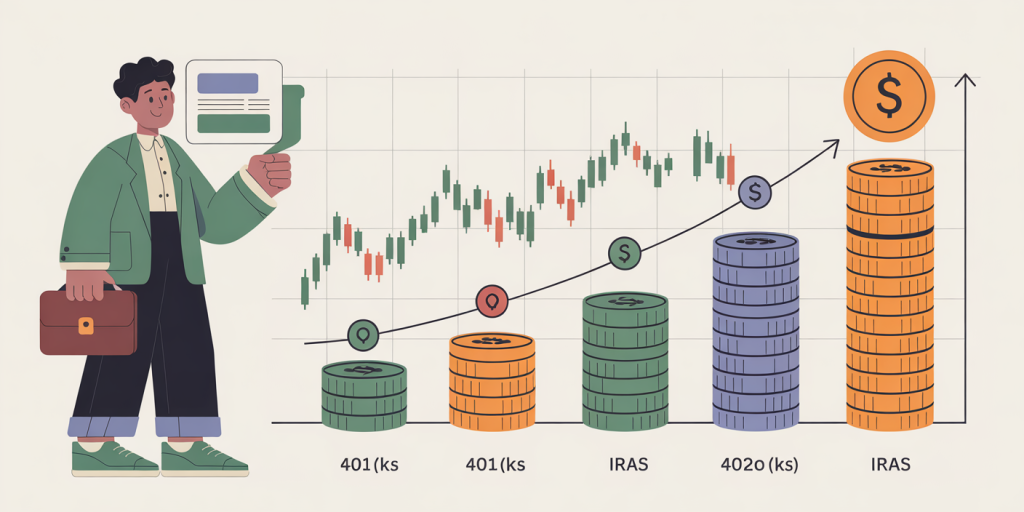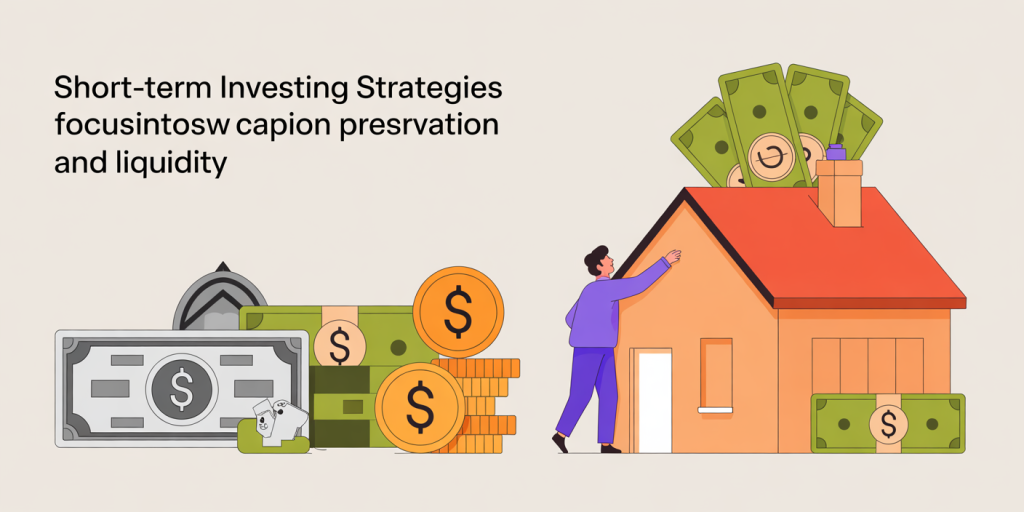Investing for Retirement vs. Short-Term Goals: What’s the Difference?
Anúncios
Investing is a fundamental part of financial planning, yet the goals and strategies behind different types of investments can vary dramatically based on the investor’s timeline and objectives. Two common but distinct purposes for investing are preparing for retirement and achieving short-term financial objectives. While the ultimate aim of both is to grow wealth, the way investors approach these goals differs significantly in terms of risk tolerance, investment vehicles, and expected returns.
Understanding these differences is crucial for building a solid financial plan that aligns with your individual needs. This article explores the nuances between investing for retirement versus short-term goals through practical examples, data, and comparison tables, helping you make informed decisions about where and how to allocate your resources.
Anúncios
—
Understanding the Investment Timeline: Long-Term vs. Short-Term
One of the primary factors distinguishing retirement investing from short-term goal investing is the duration for which money remains invested. Retirement investments typically span decades—often 20, 30, or even 40 years—allowing investors to ride market fluctuations, benefit from compounding, and take on more risk for higher returns over time.
For example, someone starting to save for retirement in their 30s might aim to retire in their 60s, giving them roughly 30 years to grow their wealth. During this time, they can afford to invest in a diversified mix of stocks, bonds, and other assets that may experience short-term volatility but tend to trend upward in the long run. According to data from Vanguard, equity investments historically yield an average annual return of 7% after inflation over long periods, making them ideal for retirement portfolios.
In contrast, short-term goals—such as saving for a down payment on a home, a vacation, or an upcoming wedding—typically have a time horizon of one to five years. Since there is less time to recover from market downturns, short-term investing prioritizes capital preservation and liquidity. Investors usually gravitate toward low-risk vehicles such as high-yield savings accounts, money market funds, or short-term certificates of deposit (CDs). For instance, during economic uncertainty, tools like Treasury bills or stable bond funds are preferred for short-term funds to ensure the money is readily accessible and secure.

Because of this timeline dichotomy, retirement investing tolerates higher short-term risk for greater growth potential, while short-term investing favors stability and accessibility, even if that means slower accumulation.
—
Risk Tolerance and Asset Allocation
Risk tolerance is intimately tied to the investment objective and timeframe. For retirement, investors can generally accept more risk since they have ample time to recover losses. The “age in bonds” rule is often used as a guideline—subtract your age from 100 to determine the percentage of your portfolio to invest in stocks, with the rest in bonds or safer assets. For example, a 40-year-old might have a portfolio of 60% stocks and 40% bonds, while a 60-year-old’s portfolio would shift more toward bonds and other fixed-income instruments.
Consider the case of Maria, 35 years old, who invests $5,000 annually for her retirement. Following a moderate risk approach, she keeps 70% of her portfolio in equities and 30% in bonds. Over 30 years, thanks to historical average returns and compounding, Maria’s investments could potentially grow to over $600,000. The volatility of stocks is outweighed by the growth benefit over an extended period.
On the other hand, James, who plans to buy a house in three years, sets aside $20,000 for a down payment. His priority is preserving his capital rather than maximizing returns. He invests in a high-yield savings account yielding 3% annually. This strategy offers stability and low risk, ensuring James will have his funds when needed, but the growth will be minimal compared to Maria’s retirement portfolio.
A comparative table illustrates typical risk and asset allocation differences:
| Investment Aspect | Retirement Investing | Short-Term Goal Investing |
|---|---|---|
| Time Horizon | 20+ years | 1-5 years |
| Risk Tolerance | Moderate to High | Low |
| Common Asset Classes | Stocks, Bonds, Mutual Funds | Savings Accounts, CDs, Money Market Funds |
| Expected Annual Return | 5%-8% (historical averages) | 1%-3% |
| Liquidity | Lower (penalties for early withdrawal) | High (easy access to funds) |
These distinctions underscore how risk tolerance is tailored to the timeline and necessity of accessing funds.

—
Tax Implications and Investment Vehicles
The choice of investment options for retirement versus short-term goals is also influenced by tax considerations and the nature of investment accounts.
Retirement accounts, such as 401(k)s and IRAs, offer tax advantages that incentivize long-term investing. Contributions to traditional 401(k) plans are tax-deductible, and taxes on earnings are deferred until withdrawal in retirement. Roth IRAs, on the other hand, are funded with after-tax dollars but allow tax-free withdrawals in retirement. These benefits encourage investors to lock funds away for extended periods.
For example, according to data from the Investment Company Institute, as of 2023, the average 401(k) balance steadily increases as investors age, reflecting consistent contribution and compounding effects within tax-advantaged spaces. Withdrawals before age 59½ generally incur penalties and taxes, discouraging premature access.
For short-term goals, investors often rely on taxable accounts or savings products with fewer restrictions. High-yield savings accounts, money market funds, and short-term bond funds provide liquidity and minimal transaction barriers, though they lack retirement accounts’ tax shelters. Interest earned on savings accounts is subject to ordinary income tax annually, which may reduce after-tax returns but offers flexibility.
Additionally, using taxable brokerage accounts for short-term investments such as CDs or Treasury bills remains popular. These accounts do not impose withdrawal penalties, enabling investors to meet their near-future cash needs without tax ramifications.
In summary, tax considerations significantly shape investment choices. Retirement planning benefits from vehicles that promote long-term growth via tax deferrals or exemptions, while short-term goals focus on accessible accounts that preserve capital and avoid penalties.
—
Impact of Inflation and Market Volatility
Inflation erodes purchasing power over time, making it a critical factor in retirement investing. Long-term investors must seek returns that outpace inflation to ensure their savings maintain value for future expenses. Historically, annual inflation averages around 2%-3% in the United States. Therefore, retirement portfolios target returns above this threshold to generate real growth.
Take, for example, a retiree who saved $500,000 but fails to account for inflation over 20 years. A constant 3% inflation rate reduces the real value of that nest egg by nearly 45%, dramatically shrinking purchasing power. Thus, retirement investment strategies emphasize equities and other growth assets that typically outperform inflation in the long run.
Conversely, short-term savers face a trade-off. While conservative investments preserve capital, their returns may not keep pace with inflation, potentially resulting in loss of purchasing power over time. For goals like buying a car or funding a wedding in two years, this may be an acceptable risk as preserving the principal is paramount.
Market volatility affects both investing types but has different implications. Retirement investors expect and tolerate market fluctuations. The 2008 financial crisis, for instance, caused average 401(k) balances to drop by nearly 30%, but many investors who stayed the course saw recovery in subsequent years. Fidelity reported that those who remained invested from 2008 to 2018 saw recovery and growth, demonstrating the value of patience during market dips.
Short-term investors, however, cannot afford significant drops close to their goal date. For example, a person saving for college tuition in 12 months cannot risk a 20% loss in value, as that would jeopardize their ability to pay expenses. Therefore, they choose low-volatility instruments, sacrificing growth potential but protecting principal.
—
Practical Examples and Real-Life Applications
To better illustrate these differences, consider two families: The Johnsons and the Rodriguezes.
The Johnson family has a five-year-old child and wants to save for college tuition when the child turns 18. They open a 529 college savings plan, which offers tax advantages and investment options varying in risk based on the child’s age. Early in the timeline, the plan invests in a mix of stocks and bonds for growth, shifting progressively to bonds and stable assets as the tuition date approaches. This blended strategy balances growth with risk management aligned with short- to medium-term goals.
Meanwhile, the Rodriguezes are in their early 30s focusing on investing for retirement. They contribute to a Roth IRA and a 401(k) plan through their employer, allocating primarily to a diversified stock portfolio to leverage long-term growth prospects. The Rodriguezes understand that while market volatility may cause short-term losses, their 30-year horizon allows them to benefit from compound growth and eventual market recoveries.

These scenarios demonstrate tailored investment approaches that reflect time horizons and objectives, highlighting the importance of personalized financial planning.
—
Future Perspectives: Evolving Strategies in a Changing Economic Landscape
Looking ahead, both retirement and short-term investing strategies face new challenges and opportunities due to evolving economic conditions, technological innovations, and changing demographics.
For retirement investing, increased life expectancy means individuals may need to save more to fund longer retirements. According to the Social Security Administration, a 65-year-old today has a life expectancy of about 85 years, implying savings should cover potentially 20+ years of withdrawals. As a result, investors may need to allocate portfolios to include dividend-paying stocks, alternative investments, or even annuities to generate steady retirement income streams.
Additionally, the rise of robo-advisors and AI-driven financial tools offers new ways to optimize retirement portfolios based on dynamic risk assessments and market conditions. These technologies can help investors better navigate market volatility and maximize returns over time.
Short-term investing will also evolve with growing emphasis on flexible, low-risk digital savings platforms and “liquidity on demand” products. Fintech companies are introducing high-yield digital accounts that combine liquidity with competitive returns, better aligning with short-term financial goals in a low-interest-rate environment.
Moreover, inflationary pressures and global economic uncertainties may prompt investors in both categories to reassess asset allocations. Diversification across geographies and asset types, including ESG (Environmental, Social, and Governance) investments, may gain prominence.
In conclusion, investment strategies for retirement and short-term goals differ fundamentally but are equally important components of comprehensive financial planning. By understanding timelines, risks, tax implications, and economic factors, individuals can tailor their approaches to meet unique financial aspirations while adapting to an ever-changing financial landscape.
